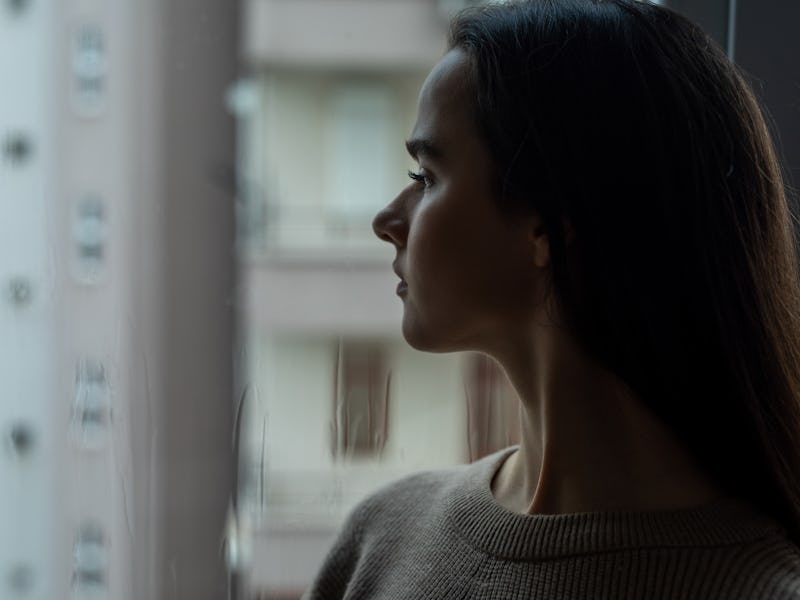What Actually Helps Seasonal Depression? Probably Not What You Think
Regardless of why or when it occurs, seasonal depression manifests in similar ways and often falls on a spectrum.

As the winter approaches, days get shorter, the weather turns colder, and the world seems just a little bleaker. While some people embrace this season — or even thrive in it — many others experience a corresponding change in mood. And for some, this can result in Seasonal Affective Disorder, or SAD, which can significantly affect our daily lives.
The condition is relatively common, affecting some 5 percent of Americans. Just as common are the seemingly endless tricks and secrets to treat or even prevent it. But are there actual, evidence-based treatments for the condition? Psychiatrist Norman Rosenthal, who led the team that first described Seasonal Affective Disorder (SAD), breaks it down for Inverse.
What is seasonal depression?
SAD (also known as seasonal depression) is a type of depression that occurs during certain seasons, often during the winter time when the days are shorter and sunlight is scant, though it can happen at any time of the year. In fact, some people regularly experience seasonal depression during the long, hot summer months, Rosenthal says.
Despite its ubiquity, psychiatrists and other researchers aren’t entirely sure of the condition’s underlying mechanisms. Rosenthal says scientists have proposed a number of theories, including that a lack of light could be triggering a chemical change in the brain. It could also be the result of a general chemical imbalance.
Regardless of why or when it occurs, seasonal depression manifests in similar ways and often falls on a spectrum. Those with it often experience fatigue throughout the day, need more sleep, tend to overeat (especially sweets and starches), and can gain weight.
Rosenthal likens it to the range of symptoms as similar to the differences between a common cold and the flu. With a cold, you can often manage your day-to-day responsibilities, but the flu can put you out, he says. “That's a little bit like winter blues and seasonal affective disorder.”
According to Rosenthal, the most severe form affects about 5 percent of the adult population. But for every severe case, he says, there are probably about three people that have it to a less severe degree.
If you have severe SAD, you should consider seeing a doctor.
“If the condition is affecting your life seriously, like if your relationship is suffering too much, or your job is suffering as a consequence of these symptoms, that's the time when you might want to go beyond self-care and go into the get a Physician or Therapist to get involved with turning things around,” Rosenthal says.
“I'm sitting in front of my lights therapy lamp right now...I'm soaking it in, and I can feel its effects on me.”
For those without severe SAD, there are various science-backed methods you can do on your own to relieve symptoms.
Light Therapy: Do those lamps actually do anything?
Light boxes or SAD lamps are all over the internet, marketed to help fight seasonal depression.
Rosenthal––a pioneer of the treatment–– says light therapy is quite effective, especially for mild cases. Because the mechanisms of seasonal depression are still debated, it’s also not fully clear why light therapy works. Rosenthal says it could be that the light is suppressing melatonin or stimulating other neurotransmitters in the brain.
“I'm sitting in front of my lights therapy lamp right now,” he told Inverse. “I'm soaking it in, and I can feel its effects on me.”
Although Rosenthal is a huge proponent of light therapy, he emphasized it alone doesn’t reverse all of the symptoms.
There are potential side effects from these lamps, and those with serious eye problems should consult with a doctor before purchasing a lamp.
“If you use it late at night, you can interfere with your sleep. You can get a headache, eyestrain, especially if you overuse these things like anything, you can stress the system too much,” he says. But overall, he says, as long as you use a lamp reasonably, you should be fine.
And although Rosenthal is a huge proponent of light therapy, he emphasized it alone doesn’t reverse all of the symptoms. As he explains, there’s a difference between a “response” and remission.”
Some treatments could help improve symptoms a bit or work temporarily but not fully resolve them. In many instances, Rosenthal says, the light will just cause that temporary relief.
What else helps seasonal depression?
Rosenthal recommends exercise, noting that you can combine exercise with light: for example, outdoors running or walking outdoors.
Cognitive behavioral therapy has also shown some promise for keeping SAD at bay. According to Rosenthal, the therapy gets people to maintain their activities and their engagement in the winter and to challenge any of the negative feelings that typically afflict people with depression.
Another unusual treatment? Negative ion generators.
Negative ions are found in nature in blissful areas like rainforests, seashores, and after thunderstorms. But there are machines that can mimic the effects. First investigated by researchers at Columbia University and NewYork-Presbyterian Hospital, these electronic devices emit a stream of electrons that combine with oxygen molecules in the air. “And there are controlled studies that show that it can actually be helpful,” Rosenthal says.
Planning ahead can also help mediate SAD, whether that means planning a trip down south during the winter or just organizing your life accordingly.
“If you have serious SAD, and you have a big book deadline to hand in, don't make the deadline March so that you can be struggling through the winter to make your deadline, just when you are not at your best,” Rosenthal says. “There's something about understanding that your life is like a wheel that turns around with seasons. “Some kind of understanding of that and working with that can be incredibly helpful.”